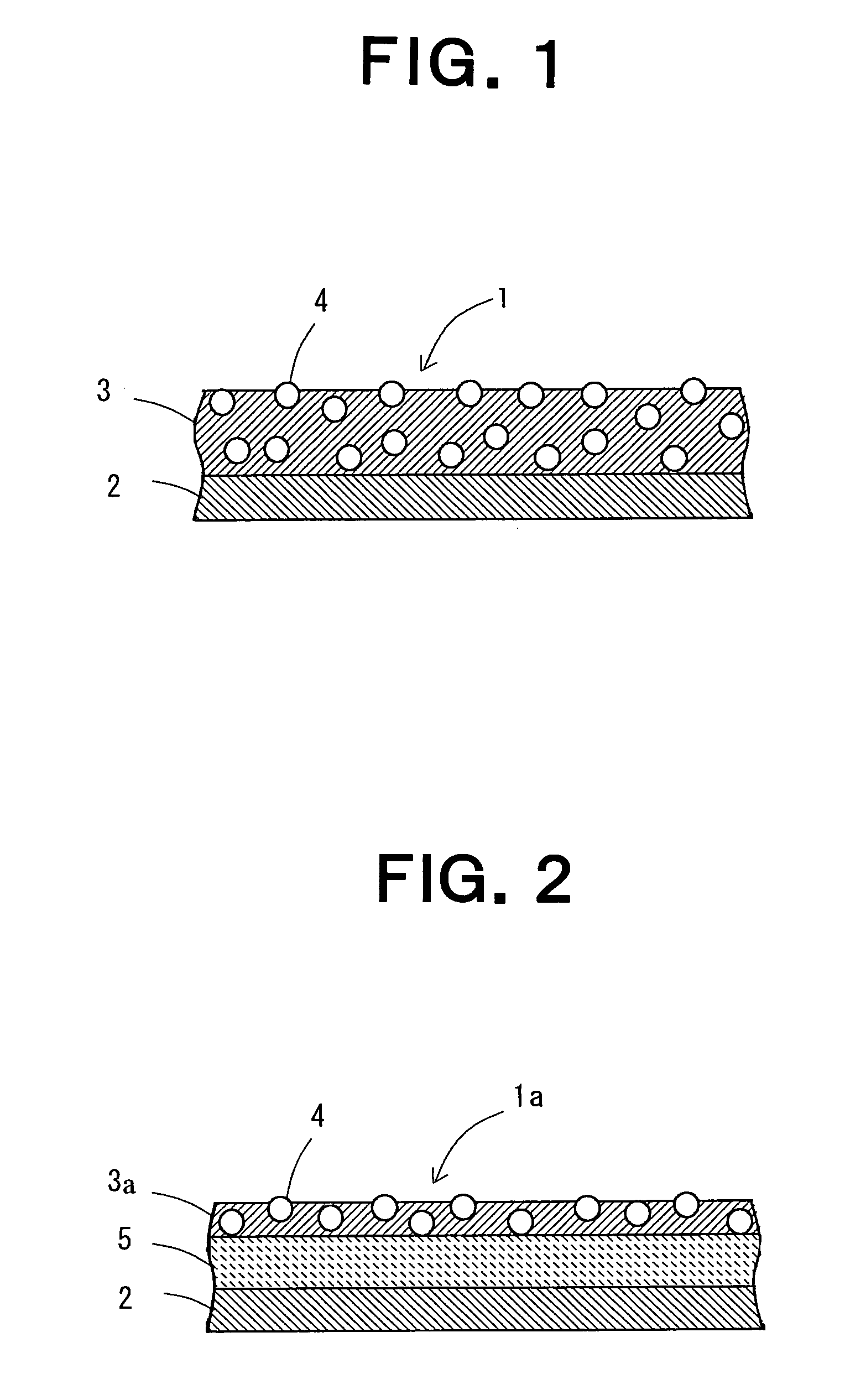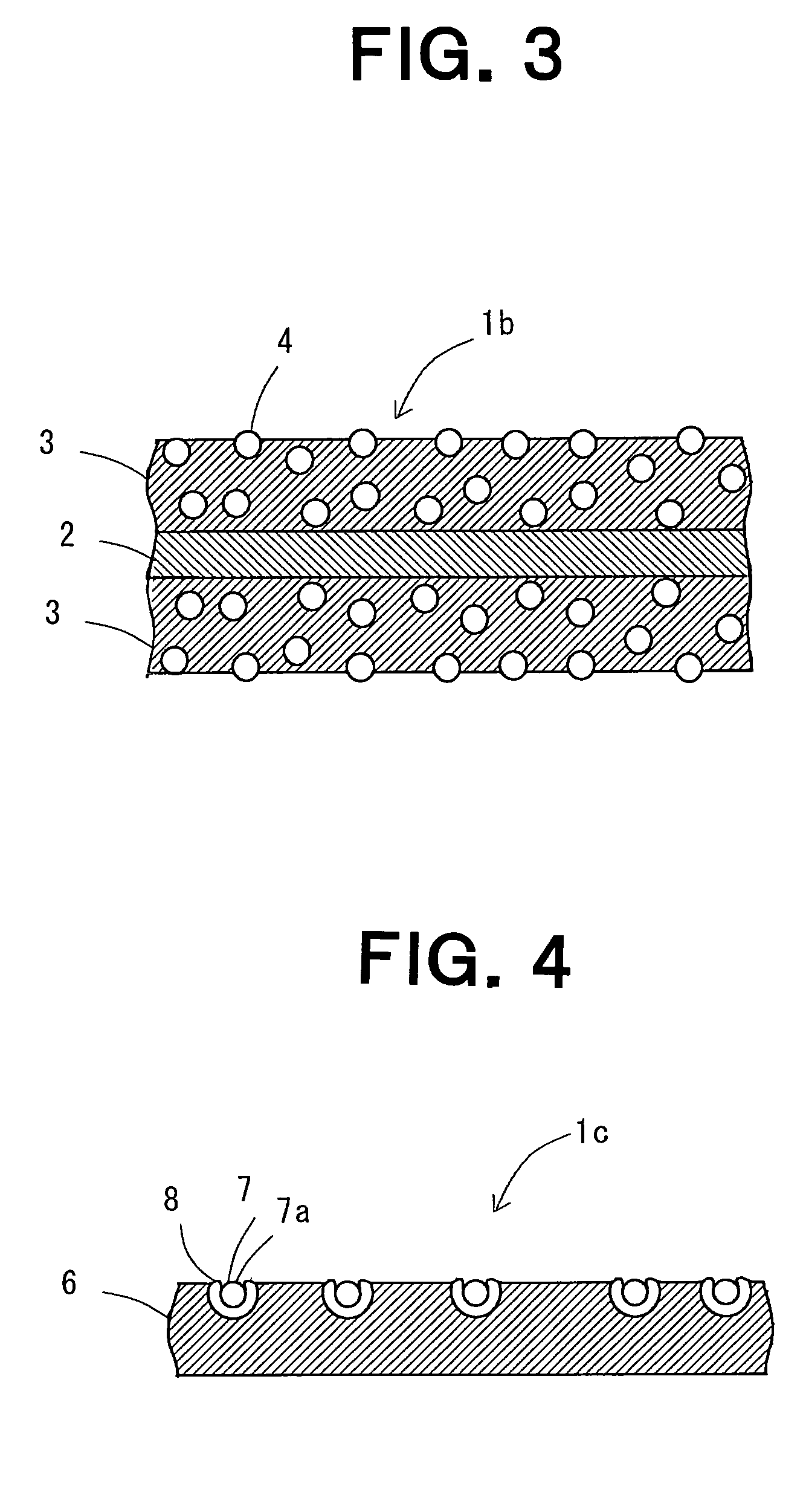Photocatalyst sheet and methods of welding and manufacturing the same
a photocatalyst and welding technology, applied in the direction of catalyst activation/preparation, manufacturing tools, physical/chemical process catalysts, etc., can solve the problems of high cost, complicated process at the welding step, low manufacturing efficiency, etc., and achieve the effect of not raising cost, easy to obtain, and not difficult to process
- Summary
- Abstract
- Description
- Claims
- Application Information
AI Technical Summary
Benefits of technology
Problems solved by technology
Method used
Image
Examples
example 1
[0073]First, Examples 1-5 and Comparative examples 1-6 are explained for the photocatalyst sheet with the apatite-coated photocatalyst particles fixed on the surface of PVC sheet which is the polyester fiber textile both sides of which are coated with vinyl chloride resin.
[0074]As Example 1, an organic solvent type surface treatment reagent for vinyl chloride resin (Dainichiseika Color & Chemicals Mfg. Co., Ltd., Leatherhit LM-1249, non-volatile component 13.5 weight %) 10.0 g, the powder of apatite-coated anatase type titanium dioxide photocatalyst (Showa Denko, F1S02 (average particle diameter 90 nm, apatite coating 2%)) 0.15 g, and MEK 3.5 g as diluent were mixed and stirred to make Solution A. The ratio of vinyl chloride (PVC) and acrylic (PMA) resins to apatite-coated titanium oxide in said Solution A was 90:10.
[0075]Next, said Solution A was coated by bar coating on one side of PVC sheet that was polyester fiber textile both sides of which were coated with vinyl chloride resin...
example 2
[0076]Similarly to Example 1 except that the powder of apatite-coated titanium dioxide photocatalyst was 0.34 g, Solution B was prepared, and Sample b of Example 2 was prepared. The ratio of vinyl chloride and acrylic resin to apatite-coated titanium dioxide in said Solution B was 80:20.
example 3
[0077]Similarly to Example 1 except that the powder of apatite-coated titanium dioxide photocatalyst was 0.90 g, Solution C was prepared, and Sample c of Example 3 was prepared. The ratio of vinyl chloride resin and acrylic resin to apatite-coated titanium dioxide in said Solution C was 60:40.
PUM
| Property | Measurement | Unit |
|---|---|---|
| particle diameter | aaaaa | aaaaa |
| forbidden band gap Eg | aaaaa | aaaaa |
| viscosity | aaaaa | aaaaa |
Abstract
Description
Claims
Application Information
 Login to View More
Login to View More - R&D
- Intellectual Property
- Life Sciences
- Materials
- Tech Scout
- Unparalleled Data Quality
- Higher Quality Content
- 60% Fewer Hallucinations
Browse by: Latest US Patents, China's latest patents, Technical Efficacy Thesaurus, Application Domain, Technology Topic, Popular Technical Reports.
© 2025 PatSnap. All rights reserved.Legal|Privacy policy|Modern Slavery Act Transparency Statement|Sitemap|About US| Contact US: help@patsnap.com



